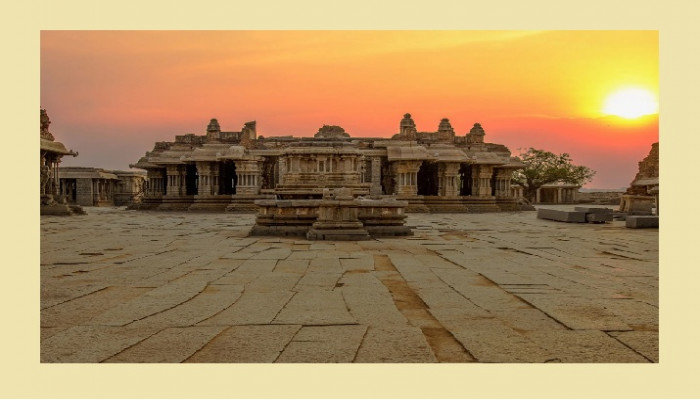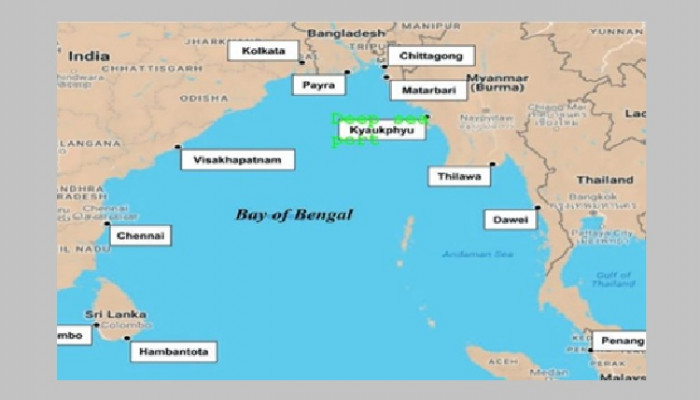- Dec 03, 2025
- Myind Staff
Featured Articles
Should the UK undertake unilateral nuclear disarmament?
Introduction Over the past few years, the world has undergone drastic geopolitical changes. The forms of deterrence and security have not just evolved, but their meaning has also changed. Earlier, during the Cold War and arms race, countries accumulated weapons and warships to demonstrate their hard power as a form of deterrence, and there were only a few countries capable of producing and maintaining such advanced weapons. However, in recent times, with the proliferation of nuclear technology, several countries have been able to develop or buy nuclear weapons. This has in no case made the world a safer, more secure and balanced place; however, its effects have been quite opposite. Countries are now always in a state of defence from a potential threat or to deter any probability of it occurring in the future. This significant change in how countries think and react has had its ripple effects, and nuclear weapons have become one of the most discussed issues. There is a constant debate on whether such a deadly weapon is a strong deterrent or coercive tool, or whether it further exaggerates the risk of a bigger crisis. Focusing on Europe, in the past more than a decade, a lot has changed, from Brexit to one of the longest-running modern European tribal wars— between Russia and Ukraine/EU/NATO. And during this period, the threat of nuclear weapons has played an important role in shaping the course of the war. British Nuclear Posture Focusing on the UK, it has held an independent nuclear deterrent for over 60 years, which has helped it manoeuvre during the Cold War era. With its first nuclear weapon acquired in 1952 with US help, Britain managed to keep the security of its people intact. Strategic analysts usually stand against this; however, one does not deny the power and sense of security and safety the nuclear weapons bring, which is highly necessary in this period. British nuclear assets currently rank number five among NPT5 countries and are today a total of 225 out of which 105 are reserve nuclear warheads, and 120 are deployed strategic assets. Serious questions arise as to what level of deterrence these small numbers provide against the Russian Federation’s nuclear threat. In real terms, besides Russia, the UK does not face any nuclear threat except from China and North Korea. Britain is already covered under the US nuclear umbrella. Aggressive vertical proliferation as a form of capability building can be critiqued. However, the fragile international order and Brexit have heightened security vulnerabilities. Therefore, some suggest that in the present, it wouldn't be prudent for the UK to unilaterally disarm its nuclear arsenal. The international community must strive for multilateral disarmament and a net zero and ensure true peace in the world. Lessons from Ukraine Some might argue that the UK needs to learn from the “Ukraine’s lesson,” where Ukraine relinquished its nuclear warheads in the 1990s in exchange for security and protection guarantees supported by NATO, the EU, and Russia. This move ultimately proved unhelpful for Ukraine and demonstrated that countries must prioritise their own security. The UK is delicately balancing, facing economic struggles while trying to avoid a major conflict in its neighbourhood. It is essential for the UK to think strategically and act pragmatically. Amidst the ongoing conflict with Russia, it becomes even more crucial for the island nation to keep the nuclear option open. The UK must maintain a credible second-strike capability. Learning from Ukraine’s experience, the UK cannot afford to become complacent or overly reliant on foreign aid and NATO allies for border security. Therefore, understanding Ukraine’s strategic errors has become more important than ever. The question remains: will the UK retain any independent second-strike capability if faced with a hypothetical, large-scale, and overwhelming nuclear strike by Russia? Are nuclear weapons a white elephant for the UK The UK currently spends only 2.3% of GDP on defence and has ambitions to spend much more. In the 2024/25 financial year, the UK spent £60.2 billion on defence; its defence spending is expected to touch £62.2 billion in 2025/26 and is slated to increase to £73.5 billion in 2028/29. This is equivalent to an annual average real-terms growth rate of 3.8% over this period. This country has made a historic commitment to spend 5% of GDP on national security by 2035. The Office for Budget Responsibility (OBR) shows that the wider ambition to reach 3.5 per cent would require around £32 billion, with no plan in place to fund it. Moreover, major critics point to £6.5 billion or 6% of defence outlay needed by the British government to maintain the nuclear weapons in the year 2022/23. NATO, Five Eyes & Extended Deterrence: The issue of unilateral nuclear disarmament is also directly related to UK and NATO relations. The UK’s abdication of nuclear weapons might be perceived as the country pulling back from NATO. This can also change the special relationship between the UK and the US. Unilateral disarmament might also lead to increased dependence on the USA. Also, with the new age grey zone challenges and threats, like cyber warfare, terrorism, supersonic missiles, etc., nuclear deterrence has stayed the strongest and ostensibly protected the state from all new threats. Nuclear weapons have not protected the UK so far from domestic terrorism incidents. The UK is also a part of the Five Eyes Anglo-Saxon alliance and works in tandem with the US in intelligence gathering and other strategic cooperation. Unilateral nuclear disarmament can save the UK a significant amount of money that can go towards a more conventional forces build-up while the US provides a nuclear deterrence umbrella to the UK. Obligations Under NPT The Article VI of the Treaty of Non-Proliferation of Nuclear Weapons (NPT), of which UK is a signatory, states that– Each of the parties of the treaty undertakes to pursue negotiations in good faith of effective measures relating to cessation of nuclear arms race at an early date and nuclear disarmament, and on a treaty of general and complete disarmament under strict and effective international control.’ British nuclear assets make the UK a nuclear target, and building more nuclear weapons just fuels a new nuclear arms race and an increasing risk of nuclear war. The UK has consistently aimed to reduce its nuclear stockpile and has acted in good faith and with sincere intentions; however, this does not necessarily mean that Britain is obliged to undertake unilateral disarmament. An important point to consider is that, even after 52 years of the NPT, there have been no instances of multilateral disarmament, nor has Britain taken steps to reduce its own nuclear arsenal. This underscores the fundamental nature of how states are built; their primary focus is to safeguard their own security. In 2016, the British government secretly authorised £85 million to be spent on upgrading the existing Trident arsenal and warheads, completely bypassing the NPT. Nuclear disarmament is not a quick task but is a slow process that requires patience and continuous efforts globally. So far, NPT-5 countries have not shown any appetite for total nuclear disarmament and a net-zero nuclear arsenal. Therefore, for a region like Europe, it is especially important to aim for multilateral disarmament, which would ensure a balance of power and stable peace. Examples of Unilateral Nuclear Disarmament: Besides Ukraine, in the past, unilateral nuclear disarmament was pursued for various reasons, including external pressure from the international community. South Africa, Libya, Iraq, Brazil and Argentina pursued unilateral disarmament. South Africa gave up its nuclear arsenal voluntarily before the dismantling of the apartheid regime on shrewd political calculations. The apartheid regime read the tea leaves and did not want a nuclear arsenal to fall into the hands of the African National Congress-led South African government. The UK is facing a similar situation now with demographic changes and a possible Islamic takeover. There are no-go areas in the UK where the British police do not venture. Sharia law is being implemented in these no-go Islamic ghettos in open defiance of British jurisprudence. Among the nine nuclear-weapon states, the UK is only next to Pakistan in terms of the domestic Jihadi terrorist threat of nuclear assets takeover. Pakistani nuclear scientists reportedly had meetings with Osama Bin Laden about providing Pakistani nuclear technology to Al-Qaeda. Pakistani nuclear weapons are always under threat of Jihadi takeover, and the US has assisted to improve command and control over Pakistani nuclear assets owing to this threat. With terrorists openly challenging the British authorities and leaking long-term plans to control the UK government due to demographic shift, the possibility of British nuclear assets being controlled by an irresponsible Islamic regime in future cannot be discounted. Economic Reason for Unilateral Nuclear Disarmament The British economy is currently in serious decline. In nominal terms, the British economy is a puny $3.95 trillion, ranked 6th, below Japan and India. The UK’s debt-to-GDP ratio stands at 97.6%, on par with the Republic of Congo (96.46%) and higher than Pakistan (91%). Welfare spending in the UK is out of control, and the Labour government is encouraging people to go back to work. Earlier this year, the Labour government announced an overhaul of the welfare system, saving the nation £5 billion ($6.5 billion). The budget for the Defence Nuclear Organisation saw its “costs increased by £38.2 billion (62 per cent) to £99.5 billion” in 2023. The nagging question remains whether the UK can afford to waste precious fiscal resources in trying to have the national ego gratification in the form of a white elephant of nuclear weapons. Nationalist and Jingoistic Postures Nuclear weapons not just give physical protection, but also a hard power to exert geopolitical influence. The UK, which is also a P-5 member, has the power to influence non-proliferation treaties. Short of its former colonial empire and bereft of any significant geopolitical weight, hanging onto the coattails of the reigning hegemon, the UK derives self-esteem from its possession of nuclear weapons. This is not a short-term gain, but it can change the course of nuclear discussions with a seat at the table. This also puts the UK in a position to initiate debate and discussion on future multilateral disarmament. It is not about the total money spent on maintenance but about the deterrence. Further, it is difficult for the government to completely dismantle its nuclear system that generates employment and develop a new type of deterrent equivalent to a nuclear weapon to ensure its security. Replacing nuclear deterrence with any other equivalent might create greater uncertainties for nations that are not willing to take risks in this already fluid and dynamic geopolitical system. Therefore, it is comparatively better to rely on tried-and-tested nuclear weapons for wars that have a lot at stake. Conclusions Though it is difficult to get rid of the most powerful man-made weapon in the world an awareness can be raised about the extent of dangers that it can cause. Countries must collaborate and build a consensus over the disarmament of nuclear weapons. Therefore, for Britain, it is only fair to still possess nuclear warheads; however, it must move towards full disarmament in the future. Economically, UK may not be able to sustain the cost of maintaining nuclear weapons. But politically, nuclear disarmament is a pragmatic pre-emptive measure to prevent Islamist forces in the country from overrunning the democratic system and controlling nuclear weapons in future. References https://www.gov.uk/guidance/the-uks-nuclear-deterrent-the-facts https://www.rusi.org/publication/uncertain-world-unilateral-disarmament-would-be-folly https://peacenews.info/blog/2020/case-unilateral-nuclear-disarmament https://www.icanw.org/five_ways_the_uk_is_undermining_the_npt https://www.libdems.org.uk/fileadmin/groups/2_Federal_Party/Documents/Conference/Autumn_2022/The_UK_s_nuclear_deterrent__final_.pdf https://cnduk.org/out-of-control-cost-of-britains-nukes-rose-by-62-in-2023/#:~:text=Published%20this%20week%20by%20the%20National%20Audit%20Office%2C,billion%20%2862%20percent%29%20to%20%C2%A399.5%20billion%E2%80%9D%20in%202023- Nov 28, 2025
- Pranav Karthik Iyer












